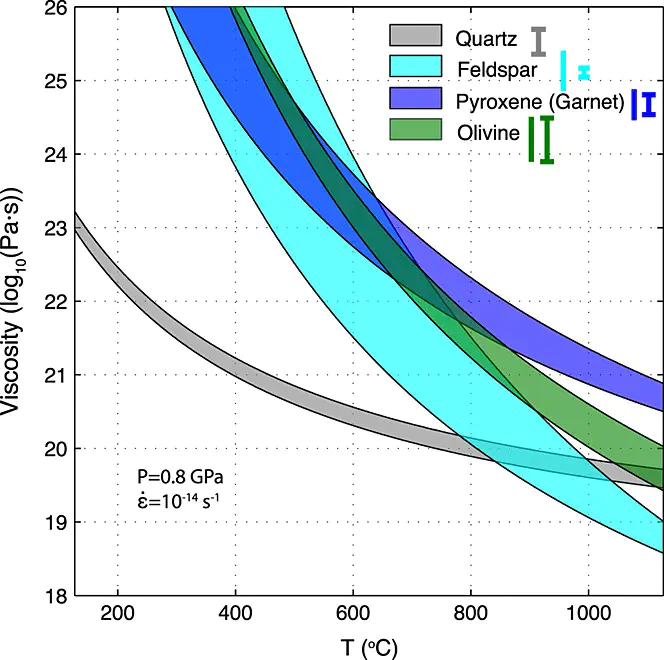Lower Crustal Rheology
 Different mineral dislocation creep flow laws, figure from Shinevar et al. (2015).
Different mineral dislocation creep flow laws, figure from Shinevar et al. (2015).
Lower crustal rheology is important to understand crustal deformation and post-seismic stress transfer for earthuqakes, vital to better understand earthquake risk in tectonically active regions! Lower crustal rheology is dependent on many parameters: temperature, pressure, strain rate/stress, mineral assemblage/whole-rock composition, water content, and grain size! I have used thermodynamic modeling combined with rheologic mixing theory to tease apart the relative importance of these parameters compared to geophysical measurements of lower crustal viscosity (see Shinevar et al. (2015, 2018)). Currently, I am preparing an invited Gordon Conference Rock Deformation talk in August 2022 on the rheology of active and extinct arcs: https://www.grc.org/rock-deformation-conference/2022/